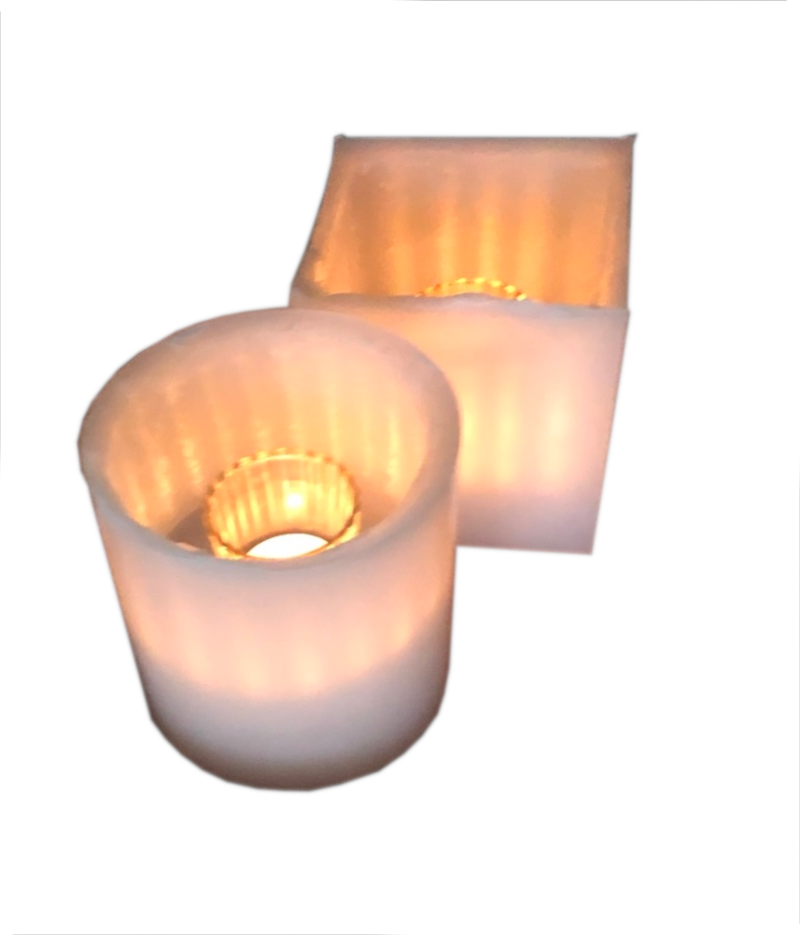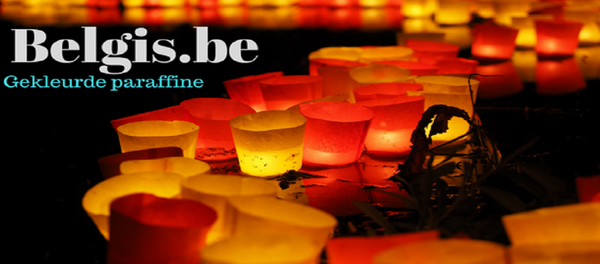
5 - Wind lights
Supplies:
- Paraffin
- Stearin (if not using colored paraffin)
- Food coloring (if not using colored paraffin)
- Full mold
- Melting kettle or bain-marie
- Bag of fine sand = prevents the bottom of the lantern from melting

Lanterns have become somewhat forgotten. This is a shame, despite the function they can provide.
A lantern in the home and especially outside the home has a useful function, and why?
- A lantern is made of paraffin and serves as a candle protector.
A lantern is practical for outdoor use. The candle in a lantern will continue to burn both outdoors and indoors.
- A lantern is easy to make, including decorations on the walls of the lantern.
- A lantern can serve as a reflection of light through the candle and the lantern, as can be seen in the decorations used on the wall.
How to make a lantern:
1 If necessary, seal the mold at the bottom (wick opening).

Preheating the casting mold.
Two-part molds can be sealed with masking tape.
2 Heat the paraffin, colored paraffin or make your own mixture.
The ideal temperature for pouring the lantern is 65° - 70°C
3 Wear gloves when pouring the mold.
4. Empty the mold and let the paraffin harden in the mold. Between each refill, the candle must cool (to about 35°C).
Temperature test: Hold the candle against your cheek. If you don't feel any difference in temperature, you can refill and empty the mold.
5 Repeat the previous steps until you have formed an 8 to 10 mm thick wall with the paraffin.


Important:
- Cover the work surface and wear an apron!
- When pouring, make sure the pot is level and on a firm surface.
- Prepare only as much color as you need.
- Check the temperature of the wax with a thermometer.
Warning:
- Only light candles in the presence of adults.
- Beware of fire: never heat the wax directly in the mould.
- Never heat the wax directly in a pan or over an open fire.
- The wax vapour is flammable at 180°C.
- Never leave candles burning unattended.
- Always place candles on a fireproof surface. (See our safety instructions )




.JPEG)
.JPEG)